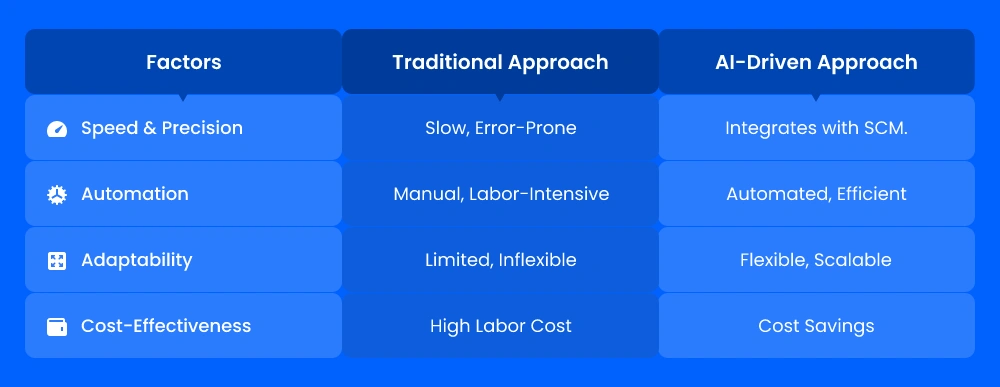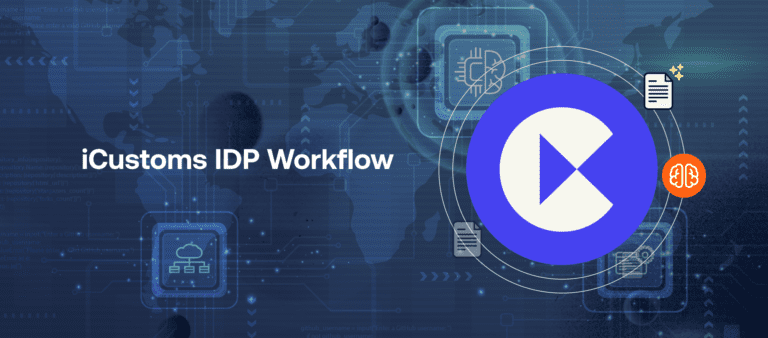Fast & Accurate ENS GB & EU ICS2 Solutions Built for You.
AI-Driven IDP vs. Traditional Document Handling System
-
Freya Jane
- Director of Customer's Success
Traditional document handling system, which are symbolised by physical paperwork, manual procedures, and intrinsic inefficiencies, are facing growing challenges in today’s business environment. A change to accurate and effective document management is necessary for the digital age. Enter Intelligent Document Processing, a game-changing technology that will transform the way we handle and process documents. In this brief study, we reveal IDP potential for transforming the future of document management.
Secondly, you can gain this from respected NEBOSH qualification will give you invaluable knowledge and skills that support your current role.
According to Accenture, “Businesses might experience a substantial rise in profitability with the effective use of AI-driven softwares; an average gain of 38% is expected by 2035.
Challenges of traditional document handling system
Within the domain of conventional document management, depending on paper-based solutions has several drawbacks that make it difficult to be efficient and flexible enough to meet the needs of today’s business climate. Here’s a look at these constraints:
Document organisation, retrieval, and storage challenges
Traditional paper-based systems frequently have space limits, making it difficult to store, manage, and retrieve records properly. Due to the physical nature of papers, filing may become complex and time-consuming, making it difficult to find precise information when needed.
Laborious, mistake-prone manual procedures
Time-consuming manual document procedures need a lot of human labour for operations like data input, filing, and sorting. Furthermore, depending only on manual procedures increases the possibility of mistakes, which can affect everything from misplaced documents to inaccurate data, thus lowering overall operational effectiveness.
Lack of cooperation and accessibility
Physical papers are restricted to specific storage places, limiting accessibility. Collaboration becomes difficult when sharing and analysing papers, which requires close proximity. In a digital era where distant collaboration is critical, this constraint can stymie the free flow of information and impair collaborative activities.
Security issues and difficulties with compliance
Traditional document handling system pose security risks since physical papers can be lost, stolen, or damaged, requiring paperless systems. If organisations don’t have strong security measures in place, ensuring compliance with industry requirements becomes a laborious and tedious process.
Document management evolution: An overview of AI-driven IDP
AI-Driven Intelligent Document Processing is a novel approach to document management that incorporates AI capabilities. This method automates information extraction, interpretation, and processing from a variety of document formats by using advanced machine-learning algorithms and natural language processing.
Key features of IDP
One of IDP’s primary characteristics is intelligent data extraction, which makes it possible to extract pertinent information from documents precisely. In addition, IDP exhibits flexibility with respect to different kinds of data, meaning that it can manage organised and unstructured data with ease. Furthermore, IDP has the ability to automate decision-making, streamline procedures, and reduce the need for manual involvement. By introducing cutting-edge AI technology, AI-driven IDP essentially changes the conventional document-handling environment by improving accuracy, adaptability, and operational efficiency.
Benefits of AI for document automation revolution
The integration of artificial intelligence with document automation yields several advantages. The speed at which AI can handle large volumes of data improves document handling efficiency. In addition, the technology reduces mistakes, improves data extraction accuracy, and simplifies monotonous work, freeing up human resources to concentrate on more intricate and vital areas of operations.
Comparative Analysis of Traditional and AI-Driven Approaches

Speed and precision
When compared to manual processing, AI-driven process automation systems process documents far more quickly. Artificial intelligence (AI) algorithms can quickly extract, understand, and process information from customs papers, resulting in accelerated document processing, whereas humans may require a significant amount of time to examine and enter data.
Additionally, AI-driven document management solutions guarantee more accuracy in the processing and extraction of data. Manual document handling system are prone to human mistakes; in contrast, artificial intelligence (AI) algorithms are built to reduce human error to a minimum, leading to more precise and reliable data processing.
Capabilities for automation
IDP has powerful automation features that let you automate tedious customs document handling systems. AI-driven IDP systems, for example, may automate operations like data input, validation, and categorisation that would normally need human labour.
This innovative system lessens the need for manual intervention by automating these procedures, freeing up human resources to concentrate on higher-value work. This boosts productivity and lowers the possibility of mistakes that might arise from human data entering.
Adaptability and scalability
IDP systems exhibit exceptional flexibility in response to evolving document quantities and formats. AI systems are easily trainable or adaptable to accommodate changes in customs document forms or the emergence of new document forms.
It can also handle large variations in document numbers without requiring major changes to infrastructure or resources because of their excellent scalability. IDP expands readily to meet increasing demands, guaranteeing continuous performance and efficiency, whether processing a few documents or thousands.
Cost-effectiveness
The manual data input, verification, and processing involved with traditional customs document management solutions frequently result in significant labour expenses. On the other hand, AI-driven IDP provides notable cost reductions via efficiency and automation improvements.
IDP reduces labour expenses by streamlining document processing workflows and automating repetitive operations, which decreases the requirement for substantial human resources. Furthermore, greater document processing speed and accuracy reduce delays and mistakes associated with manual handling, resulting in total cost savings.
The bottom line
Intelligent Document Processing serves as a light of innovation in the field of document management. When compared to traditional approaches, its AI-driven capabilities offer unparalleled efficiency, precision, and adaptability. Businesses will achieve new levels of efficiency in the digital age by streamlining operations, lowering mistakes, and implementing IDP more and more. IDP is making it possible for organisations to handle documents in a more intelligent and agile manner, which will position them for success in the quickly changing business environment of today.
Experience the revolutionary potential of AI-powered IDP with iCustoms. Simplify your customs document processing procedures right now to increase your company’s productivity and trade compliance. Visit iCustoms.com to find out more about our IDP software and solutions.
FAQ's
What's the key difference between AI-driven IDP and traditional document handling?
AI-driven IDP uses sophisticated algorithms to automate document processing activities, resulting in faster and more accurate outcomes than traditional techniques.
How does IDP enhance efficiency compared to traditional methods?
AI-driven IDP greatly accelerates document processing by automating repetitive operations like data input and validation, which decreases the need for human interaction. Additionally, by reducing mistakes, this automation increases efficiency even more.
Is IDP versatile for various document types and industries?
AI-driven IDP is quite flexible and capable of managing a variety of document formats from many sectors. AI algorithms can be trained to precisely extract and analyse relevant data from a variety of customs documents.
What role does machine learning play in IDP?
Machine Learning helps AI-driven IDP algorithms learn from data inputs, improve, and adapt to changing document formats and requirements. ML algorithms improve the precision and efficacy of IDP systems by analysing patterns in documents to quickly extract pertinent information.
You may also like:
Struggling to Extract, Catagorise & Validate Your Documents?
Capture & Upload Data in Seconds with AI & Machine Learning
Subscribe to our Newsletter
About iCustoms
Struggling to Extract, Catagorise & Validate Your Documents?
Capture & Upload Data in Seconds with AI & Machine Learning
